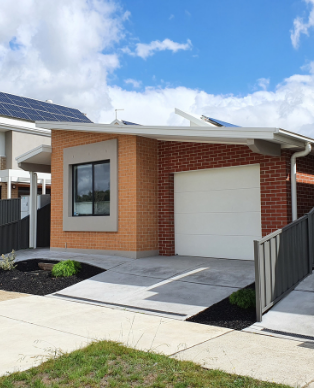This webpage outlines key legislation impacting the community housing sector in Victoria.
Key legislation and regulation
There is a range of laws and regulations which cover how community housing organisations operate and deliver on their mission to house low-income households in ways that are safe, sustainable and appropriate. Some of these are specific to social housing, such as the Housing Act, while others apply to all rental providers.
Some of the most important laws and regulations are detailed below with an explanation of what they mean for community housing organisations and how they impact on their businesses.
Victorian Residential Tenancies Act (1997)
The Act defining the rights and responsibilities of renters and rental providers (landlords), the Residential Tenancies Act (RTA) was updated in 2021 to bring into force the government’s significant rental law reform package. This package aims to create a fairer, safer rental housing system for all Victorians.
More than 130 reforms clarify the rights and responsibilities of both renters and rental providers – from before a rental agreement is signed, until after the agreement ends – and apply to all types of tenancies.
The RTA is the legislation that governs how often rental providers can increase the rent, obligations around the condition of the property and repairs, and when and how rental providers and renters can end a tenancy. There are also regulations that supplement the Residential Tenancies Act with further details on a range of matters, including setting out minimum standards for rental properties.
Housing Act (1983)
The Housing Act’s purpose is to ensure that every person in Victoria has ‘adequate and appropriate housing at a price within his or her means’. It governs the provision of social housing in Victoria.
The Housing Act establishes key components of Victoria’s social housing system, including:
- A single waiting list for social housing – the Victorian Housing Register – that simplifies the process for Victorians to register their need for affordable housing.
- A regulatory system that governs the operations of the community housing sector.
Victoria’s community housing regulation is managed by the Housing Registrar, which sits within the Department of Treasury and Finance. The Housing Registrar registers, monitors, and assesses the performance of registered community housing organisations utilising gazetted Performance Standards.
These Performance Standards “seek to protect housing assets and ensure quality services to tenants by regulating well governed, well managed, financially viable registered agencies.
The focus of the performance standards is in ensuring that the registered agency delivers the best possible rental housing services to its community. To do that requires effective, ethical governance, competent management and a sound business strategy, incorporating all elements of rental housing provision, management and maintenance.”
Charter of Human Rights and Responsibilities Act (2006)
The Charter enshrines a set of rights derived from the International Covenant on Civil and Political Rights and applies to all processes and decisions made by the Victorian State Government’s departments and public authorities, which includes most community housing organisations.
Although the Act does not explicitly name community housing organisations, the sector has established policies and processes that promote fairness and recognise and protect the human rights of renters as outlined in the Charter.
Go to the Charter of Human Rights and Responsibilities Act (2006) as amended in 2020.
Planning and Environment Act (1987)
The Planning and Environment Act provides the framework for planning the use, development and protection of land in Victoria. It was amended in 2018 to include the aim of facilitating the provision of affordable housing in Victoria, at which time it introduced a definition for affordable housing and established s173 Affordable Housing Agreements as a legal mechanism that planning authorities could use to record voluntary contributions of affordable housing by landowners.
This Act sets out a definition of affordable housing based upon income ranges, which are updated and gazetted annually, and refers to matters that need to be considered when determining whether affordable housing is appropriate for local needs.
Registered community housing organisations are explicitly identified as potential recipients of affordable housing which is created through Affordable Housing Agreements. As the only rental providers (landlords) with regulation overseeing their ongoing operations as well as decisions to sell properties, CHIA Vic sees the community housing sector as an ideal operator of these affordable housing properties.
